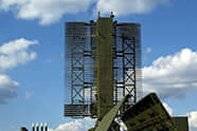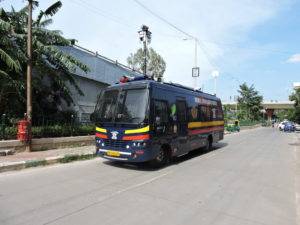Introduction
A common enough concern among purchasers of surveillance systems in India is the ability of the cameras (and to a lesser extent, NVRs) to withstand extreme temperatures of a typical north Indian year. A temperature in city like Jaisalmer touches a high of 47° Celsius in summer and a low of -1° Celsius in winter. Traditional camera (and NVR) enclosures, having been designed for the European and US markets, have a problem handling extremely hot conditions.This brief discusses a few options available to users, when evaluating surveillance solutions in extremely hot climatic conditions, or in conditions where summer maximums and winter minimums differ by as much as 50° Celsius.
IP Ratings and Enclosures
One of the December 2009 Tech. Briefs – IP Cameras and Their Housing Options – provided details about IP ratings (the IP here refers to International/Ingress Protection and not to Internet Protocol), and their implications for the operational use of a device. To recap, IP ratings define the level of protection an enclosure affords against dust, water, and impact (these days, impact is defined by the IK rating – from 1 to 10). However, temperature is not a parameter covered by the IP ratings.Therefore, a user interested in installing a surveillance system in a hot location will need to check the operating conditions of the camera, and see if the minimum and maximum temperatures mentioned, cover the extremes of the location’s annual temperature spectrum.
Extreme Climate Enclosures for IP Surveillance Cameras
The effects of temperature on a surveillance camera have become more pronounced these days, with the increasing use of IP surveillance cameras. IP surveillance cameras use a lot more electronic components than the traditional analogue CCTV surveillance cameras, and are therefore more susceptible to extreme heat.The following link provides a short visual of the effects of heat on an IP video surveillance camera: http://www.dotworkz.com/videos/hot_climate_application.asp
As you can see, the surveillance camera is effectively non-functional, and the user now has a surveillance blind-spot in its deployment.
Typical IP video surveillance cameras are designed to work within a temperature range of 0° Celsius to 50° Celsius, but sometimes that is just not enough. The maximum temperature recorded in summer, in Jaisalmer, may be 47° Celsius; but, there may well be localities in the city where the temperature exceeds 50° Celsius on a typical peak-summer day.
Extreme climate enclosures are specifically designed to allow IP surveillance cameras to work at temperatures of well over 60° Celsius. These enclosures work on the basis of active cooling: either thermo-electric or air-active or liquid or cryogenic or phase-change or a combination of these. Specialised extreme climate enclosure manufacturers design their enclosures to be compatible with popular IP video surveillance camera models.
Since such enclosures are an expensive add-on, users need to look at their surveillance plans and figure out which cameras need to be fitted with extreme climate enclosures.
Extreme Climate Enclosures for NVRs
The effects of temperature on an NVR, although even more severe than in the case of an IP camera, are mitigated by the fact that NVRs are rarely positioned out in the open, and open to the elements.Traditionally, the NVR is placed in an enclosure that protects it from the elements, even if it is located outdoors. This is due to the fact that it is more susceptible to failure under extreme temperatures, on account of the storage device in the NVR.
Be that as it may, there are extreme climate enclosures for NVRs too, that work on the same principle as those for IP cameras.
Conclusion
With an increase in the number of Indian cities now going in for city-surveillance projects, it is critical that city planners factor in the effects of India’s extreme climatic conditions when rolling out city-surveillance projects. Similarly, with many organizations going in for critical infrastructure protection programmes, it is imperative that specifications for surveillance equipment include the ability of the equipment to function, unaffected, under the climatic conditions of the location/region.



